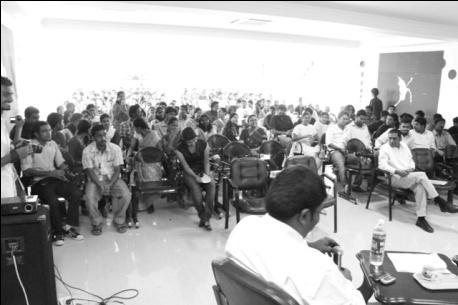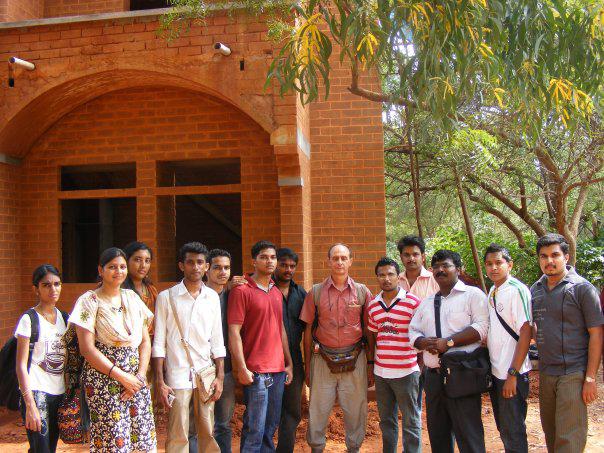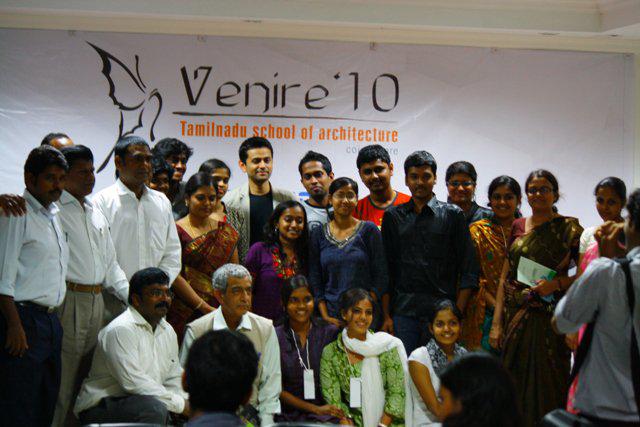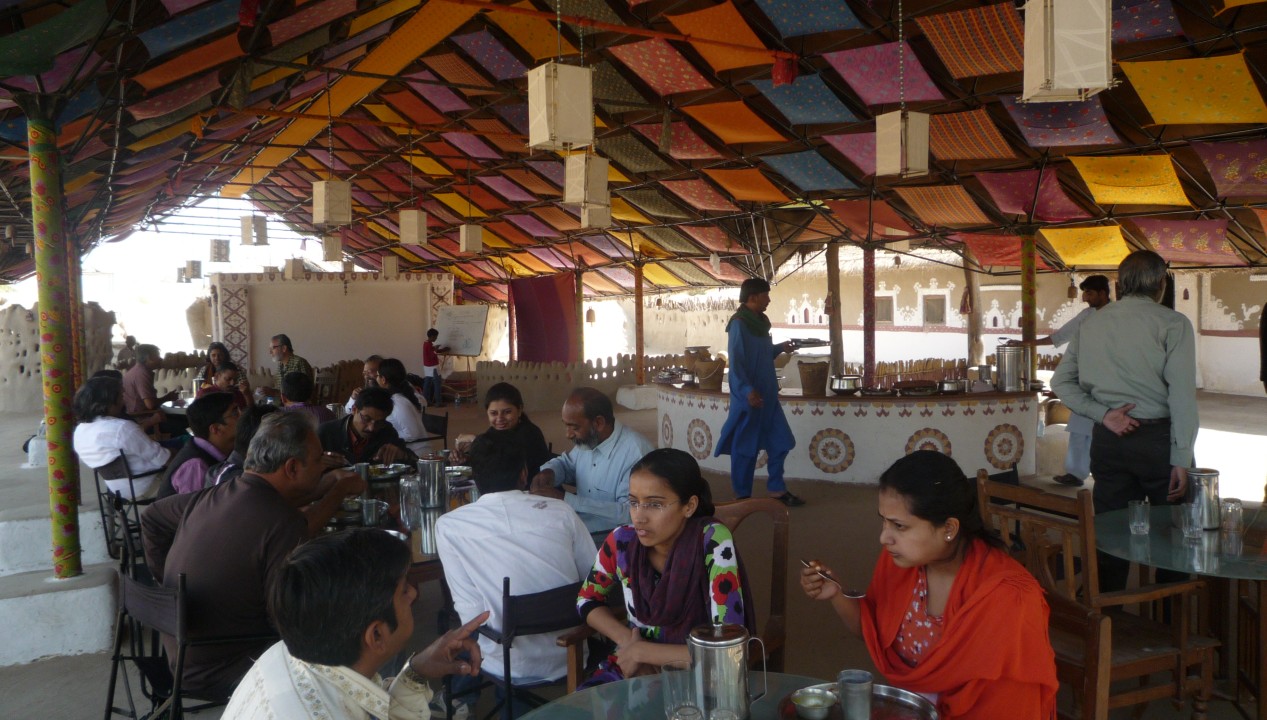About The Author

M.Arch in Architecture Education – Associate Prof Asif R Khan is currently working as Principal (i/c)/ Head of Department- Al Salama Institute of Architecture, Perinthalmanna, Malappuram, Kerala. He is associated with CEPT University, Ahmedabad as a Doctoral Research Fellow. He has worked with various Schools of Architecture in India as a Guest Faculty Member. Has professional exposure in the Middle East and with various Architecture Consultancies in India on various significant projects. Promotes a Design Studio: Sustainable Horizon – wishes to propagate architecture with a social conscience. He can be contacted at [email protected]
Prologue
Architecture profession bestows an individual with the creative liberty and procedural cognition to cast one’s logical mind’s eye and concerns into tangible realities, this would pave the way for the evolution of newer built icons for the nation as well as the global context in future both at micro and macro settings. The things that we human beings build or evolve are the result of our endeavours in two directions; on the one end, we proclaim the accomplishment of a purpose – a built environment to accommodate certain activities and on the other to nurture an expression that could communicate desired response based on the context1.



Architecture is a social act and the material theatre of human activity.
Spiro K Kostof
Architecture Studio
In the early stages, the studio as an analogical learning environment borrowed and adopted the domain of the artist’s creative activity space, which was personal in nature. Gradually, the studio environment was formalized to allow for more creative as well as complex pedagogical pursuits with more students. The culture of the architecture studio was linked to learning–preparation of drawings from which buildings could emerge.
With time, the transition has brought about drastic changes in the outlook of the learning atmosphere and approach. The studio got transformed from the apprentice to the atelier and then into the institutionalized environment for learning architecture. Practice and the philosophy of the masters infiltrated the studio, as in Bauhaus in Germany, and to a large degree influenced the established means and methods. The study of new building materials, techniques of their application, and influence due to market forces along with the concern for rationalism seemed to dominate the designer’s mind more than the romanticized approach of the earlier days. In recent years globalization has brought about a number of radical changes that are offering new pedagogical challenges and possibilities2.



Present Scenario
Today, the word “architect” refers to a licensed professional. The journey for a successful realization of a professional academic program leading to an undergraduate degree in architecture is spread over a span of five years. The qualification for the initial phase of the course is gained through clearing the National Aptitude Test in Architecture (NATA) conducted by the National Institute of Advanced Studies in Architecture, Pune. NIASA is an educational unit of the Council of Architecture. The standards of education being imparted in the professional institutions (constituent colleges/departments of universities, deemed universities, affiliated colleges/schools, IITs, NITs and autonomous institutions) are governed by Council of Architecture (Minimum Standards of Architectural Education) Regulations, 1983, which set forth the requirement of eligibility for admission, course duration, standards of staff & accommodation, course content, examination etc3.
The pedagogical approach during the tenure of the course is based on the proper moulding of various domains of transmission and transaction of learning – cognitive, effective, perceptive and psychomotor realms. In broad-spectrum inputs from various core disciplines as well as peripheral areas are integrated into the design studio to evolve concrete process-oriented solutions for architectural issues.
Architectural design, per se, is not to be seen as a subject of study by itself, but as an opportunity to bring together into a comprehensive whole the subject matter and knowledge acquired from peripheral areas of study. If we accept Design as the soul of learning architecture – it is omnipresent. It has no physical existence, but like the human soul is present only as a “spirit.” One can therefore say therefore, that “Design” is the result of a process of integration of the real and the palpable material that is provided by other areas of study that are essential of an applied nature and the emotive response of the learner. As such, Design ought to be seen not as a “subject” of learning but as an application of what is learned from support subjects to Design. The studio is like a crucible where all applied knowledge and the essentials of design melt into each other to obtain a unified whole4.


The academic program takes the candidates through an expedition where learning is not limited to the institutional environment. Travel, industrial exposure, workshops, interactive sessions with professionals and various off-campus activities play a vital role. Development of clarity and a valid perception regarding the Body of Knowledge which constitutes the Domain of Architecture, would lead to the realization of a successful profession.

Why Architecture Course?
From Students Desk – Mr Bibin Cheriyan, 2nd Year Architecture Student, MES School of Architecture
It is in human nature to appreciate and admire a work of art. But only a few get to make such pieces of aesthetic realities. It’s even rarer for people to get a chance to ‘build’ masterpieces. When it comes to choosing a career nowadays, a cloud of uncertainty looms over a 10+2 student. There is always the pressure from all sides for the student to opt for the easiest and the most popular option. At the end of the day, it comes down to taking the ‘most trodden’ path for a majority of them. However, classifying architecture as the path less taken would still be an understatement – keeping in mind its potential to transform our society, invent new ideas, and new solutions, create new spaces in ways that we never knew; or realize a long cherished dream. Architecture is undoubtedly the best option for such people. Back in the olden days, they used to say that an architect is ‘a scholar of all arts’ owing to the fact that he played the roles of an artist, an engineer, and a manager all simultaneously. Even now architecture is in the league of one of the most attractive professions on earth due to the above reasons. But architecture is also not the easiest of ways; nor should it be taken for granted. It requires the utmost passion, dedication, hard work and patience to make a mark as a successful architect.
Schools of Architecture depicted in the narrative illustration –
- MES School of Architecture, Malappuram, Calicut University, Kerala.
- Tamil Nadu School of Architecture, Coimbatore, Anna University, Tamilnadu.
Bibliography
1. Conceptual Realisation In Design Studio. Khan, Ar. Asif R. December 2011 Vol 11 Issue 12, Architecture – Time Space & People.
2. Towards Total Integration In Design Studio. Khan, S.A. Deshpande and Asif R. Issues (2-3), Massachusett: Archnet IJAR – MIT Massachusetts Institute of Technology, July – November 2010, Vol. Volume 4 . ISSN 1994-6961.
3. www.coa.gov.in/school/gen_info.htm. www.coa.gov.in. [Online] [Cited: March 15, 2012.] http://www.coa.gov.in/acts/regulation1983.htm.
4. Deshpande, Professor S. A. D is for Design. COA Magazine. 2006.
Photographs– Author






